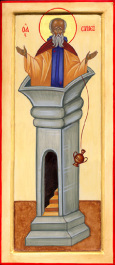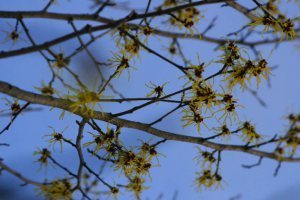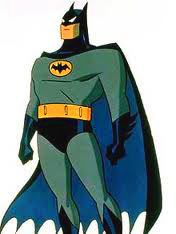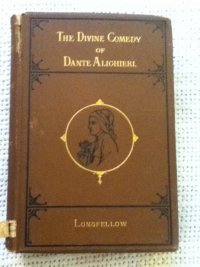Ann E. Michael's Blog, page 74
February 27, 2013
AWP conference 2013
I am heading up to Boston next week with about nine thousand other writers, writer-educators, writer-publishers, academics, and business people. The annual Associated Writing Programs conference will be in session March 6-10. I posted about the conference briefly last year...and last year’s conference introduced me to Brian Boyd’s work on cognition and storytelling. So I am hopeful that this year’s programs and panels will prove equally enlightening.
The conference offers a chance to meet or at least hear some of my favorite writers and to talk with interesting colleagues. Best of all, there are thousands upon thousands of books and literary magazines to browse. If I feel shy, I can interact with books at the Bookfair and “meet” my fellow writers through their polished texts instead of face-to-face (or body-to-body in the packed bar). The main problem with any event of this kind is the lack of places for introverts to regain equilibrium. At AWP, there are quite a few introverts; and people tend to claim a spot by a window, balcony, or corner somewhere in the conference area and send out “don’t disturb me, I’m recharging” body-language signals. Or they eat alone in the restaurant without looking too uncomfortable about the status of solo diner.
Writers understand.
~
Lori A. May offers her insights on the conference here, with a focus on people who are considering graduate school programs. I will be participating in a panel on that topic: the Low-Residency MFA. My main interests, however, remain bibliophile-oriented: discovering poets whose work I haven’t encountered before, finding new books by favorite poets, learning who is editing which long-running journals, and finding new journals to peruse.
By contrast, here’s a lovely, very funny article by Kay Ryan that appeared in Poetry magazine in 2005. The second paragraph sets the tone:
Once, when I was about twenty-five and not yet entirely aware of the extremity of my unclubbability, I did try to go to a writers conference. Thirty minutes into the keynote address I had a migraine. It turns out I have an aversion to cooperative endeavors of all sorts. I couldn’t imagine making a play or movie, for instance; so many people involved. I don’t like orchestral music. I don’t like team sports. I love the solitary, the hermetic, the cranky self-taught. Make mine the desert saints, the pole-sitters, the endurance cyclists, the artist who paints rocks cast from bronze so that they look exactly like the rocks they were cast from; you can’t tell the difference when they’re side by side. It took her years to do a pocketful. You just know she doesn’t go to art conferences. Certainly not zillion-strong international ones, giant wheeling circuses of panel discussions.
How, then, one wonders, can it be that I have just come back from AWP’s annual conference in Vancouver, treading upon a lifetime of preferring not to?
I fear I am rather in her camp. I do like orchestral music, but I prefer chamber ensembles. I don’t care for team sports. I love the solitaries, the St. Simeon Stylites of the world; there’s a bit of the hermit in me. Crowds–shudder! Yet a conference of writers at least offers the promise that I will be among others who understand how I feel and who feel that way themselves now and then.

St. Simeon Stylites
Another advantageous aspect to this event is that I get a chance to talk about poetry and creative writing with people who are as passionate about it as I am. I can discuss the logic and music behind free verse line breaks and learn contemporary writers’ opinions about the sonnet. Is the metaphor dead? Does symbolism have any place in modern writing? Is hypertext the new L=A=N=G=U=A=G=E poetry? Does anyone understand the significance of the tattoo that says “December 10, 1830″ on that young woman’s arm? (It’s Emily Dickinson’s birthday). I can talk about my book Water-Rites with people who are working on getting their own poems published and discuss current projects with folks who are sure to have ideas and advice to share.
So the event is worth a bit of discomfort on my part. If I get too overwhelmed, I can go back to my room or walk the chilly Boston streets or have a chat over coffee with just one person at a time.
Or maybe find a pillar in a park somewhere. I think I recall one at Bunker Hill….


February 24, 2013
Exhaustion & bloom
Isak Dineson: “I write a little every day, without hope and without despair.”
~
Some days, the little is…quite little. I am not exactly taking a break from reading and writing, but a great deal of my reading these days is student-written work; and the writing tends to be corrective.
There are also events in one’s life that tend to push back against the time needed to dwell on creative things.
Kurt Vonnegut: “So it goes.”
~
I’m re-reading Descartes. The best part of his philosophical writing, in my opinion, deals with his conscious desire to remove all prejudicial thinking from his mind. I have my doubts as to his success in that regard, but I love the splendidness of trying to attain the mental tabula rasa. Open-mindedness, a virtue more human beings should strive to embrace.
~
And there is also exhaustion, pure and simple. Some days, I need my rest.
February: awaiting the snowdrops’ blooms. (They’re nearing…the white tips are visible, enclosed in the deep green spathes.) Meanwhile, fragrant yellow winterhazel.

winter hazel


February 14, 2013
Memoir & the lyrical narrative
I have decided to devote two class periods to exploring the lyrical narrative with my students. The reason evolved from, not exactly a revelation, but a dawning awareness that this particular mode of poetry connects more easily with students than other modes.
Popular music, of course, sets the contextual stage here. American country music fills the nation’s highways and airwaves with lyrical narratives and modern-day ballads. The story-song appears in a wide range of musical genres from rock to rap, born from simple blues narratives and Appalachian ballads and from John Henry and Casey Jones to glam-rock “epic rock ballads,” new wave, Motown, British invasion (think “A Day in the Life”) and quirky indie lyrics–not to mention huge hits like “Lying Eyes” and “The Devil Went Down to Georgia” or oft-played 70s narrative songs like “Cat’s in the Cradle” or Bruce Springsteen’s “Thunder Road.” These tunes are all before my students’ time, but they have their own lyrical narrative popular songs; they “get it.”

Bruce Springsteen: lyrics
Thunder Road
Narrative lyrical poems hook readers who might not otherwise spend much time closely reading a poem because of those critically important pronouns “I” and “you” and because there’s a human impulse to stick with a story. We want to know how it ends; and we want to figure it out in our own subjective ways, to put the speaker/writer’s experience into our own (or vice versa) and interpret the narrative on our own terms. We also like to be a little surprised.
Why?
I’ve touched on the topic of the cognitive need for narrative in a previous post, and on Boyd’s story-telling impulse research (here), and now–in light of reading the lyrical narrative poem–I want to offer an excerpt from Oliver Sacks. In an excerpt from Speak, Memory, Sacks writes:
“There is no way by which the events of the world can be directly transmitted or recorded in our brains; they are experienced and constructed in a highly subjective way, which is different in every individual to begin with, and differently reinterpreted or reexperienced whenever they are recollected…Frequently, our only truth is narrative truth, the stories we tell each other, and ourselves… Such subjectivity is built into the very nature of memory, and follows from its basis and mechanisms in the human brain. The wonder is that aberrations of a gross sort are relatively rare, and that, for the most part, our memories are relatively solid and reliable. We, as human beings, are landed with memory systems that have fallibilities, frailties, and imperfections—but also great flexibility and creativity.”
How can we honestly interpret a poem without acknowledging immediately that our brains are highly subjective processing organs that inherently interpret and experience input differently? Our personal narratives, our memories and recollections, limit, expand upon, and influence our interpretations. That is why I insist that my students accept all “expert interpretations” of famous works with a grain of salt. Every human brain re-creates based upon subjective, unique processing; the fact need not keep us from admitting of rational thinking, but it must affect human interpretations of phenomena. Especially subjective phenomena such as art.
This is also the reason I warn my students not to assume that the speaker of the poem is the poet himself or herself. Poets invent, and they can invent personas. Furthermore, in their efforts to write truths–emotional truths, lasting truths–they may alter physical, actual, memory-based “truth.” In other words, maybe the story happened just that way. Or didn’t. Though “for the most part our memories are relatively stable and solid,” the paradox of art is that altering the facts can lead to deeper truths. Sometimes the facts seem altered from one perspective but not from another. Other times…well, I confess, I myself have changed some facts in poems in order to make the poem better. In such cases, craft supersedes the need for stony factuality. I guarantee I am not the only writer who employs this strategy.
Whose life is it anyway? And whose art? Sacks reminds us of the loosey-goosey aspects of recollection: “The neuroscientist Gerald M. Edelman often speaks of perceiving as ‘creating,’ and remembering as ‘recreating’ or ‘recategorizing.’” Thus, the lyrical narrative is a form of memoir, created through individual perception and recreated through the process of memory itself. Which, all of us being human and therefore fallible or otherwise liable to err, and subconsciously quite able to lie to ourselves, means that the lyrical narrative could end up as mythical as the stories of Mount Olympus.
And just as compelling to generations of human listeners or readers.
A voyeur’s fascination that the reader may be witness to the human-talking-to-human in the framework of a storyline is a significant part of what engages audiences. This poem might be memoir! It may be true. It may be genuine experience, something to which I can relate. There’s emotional frisson, or thrilling curiosity, or the dread of knowing it will all end badly. But I must know; and I want to believe it might be true. Tell me sweet lies, oh troubadour!
~
*Note: the image above is not Bruce Springsteen’s handwriting. He prints. An example of his actual lyric drafts is here.


February 9, 2013
Introversion as character?
Holy pop-psychology, Batman! Introverts are asserting themselves all over the place! At least, you might think so based on current media trending. There was that insightful and rather humorous 2003 article called “The Care and Feeding of Your Introvert” in The Atlantic magazine. More recently, Susan Cain has brought us the book Quiet: The Power of Introverts in a World that Can’t Stop Talking. When popular culture embraces an idea, parodies and simplifications and misinterpretations spawn in the stream of cultural consciousness. Some of these are charming, such as Dr. Carmella’s Guide to Understanding the Introverted, with its hamster-ball analogy. Mostly, the chatter masks any actual usefulness of categorization. Categorization as a method of understanding has had its pros and cons going all the way back to that master of the process, Aristotle.

Batman is copyrighted by DC Comics
Recently, I’ve been participating in discussions, virtual and face-to-face, around the topic of introversion and extraversion as personality or character traits, and the value or lack of value of the categories as well as the definitions of these words. Popular culture, which perhaps ought to be called majority culture, as usual flattens and simplifies the concepts. “Introverts” are shy and quiet, “extraverts” are sociable and talkative.
Or not. The current psychological meaning of introvert is based on the work of Isabel Briggs Myers and her colleagues and means, broadly speaking, a person “predominantly concerned” with his or her interior thoughts or sensations and less concerned with “external things.” An extravert (sometimes confused with the non-psychological, more general term extrovert), by contrast–naturally–is more concerned with life’s “practical realities” and gains more gratification from what is outside the self.
A friend of mine recently blasted the Myers-Briggs type indicator assessment as being responsible for promoting stereotyped ideas of introverts and extraverts and claimed the assessment is worthless (she used an earthier term). I don’t agree that Myers-Briggs is worthless; like any assessment tool, however, it cannot provide anything more than a snapshot of a personality. It can provide useful insight when combined with careful observation, professional knowledge, and other methods of determining character and personality. Just because Myers-Briggs is probably the most-applied or most-trusted personality assessment tool in the world does not mean it is always accurate or can be interpreted by laypeople…or even by experts. Brief forms of the test online are just that: brief forms, less complex, and therefore–as human beings and the mind and consciousness and personality are exceedingly complex–considerably less reliable as to results.
Then there is the whole concept on which the test, and others like it, are based. Carl Jung posited the notion of two dichotomous pairs of cognitive functions operating in the human psyche, and the test is derived from his initial explorations concerning those dichotomies. Well, that works–if you are a dualist. Not all of us buy into the categorization program, and many skeptics suggest that the world is far more interesting than just pairing opposites can explain.
I love the idea of harmony the taoist symbol represents, but my sense of the universe’s fractal and relational saved-from-chaos-by-a-thread “reality” tells me things are not that simple. We simplify them to attempt understanding at the human level, but oversimplification leads to stereotypes and fallacies, outcasts and enemies. Introverts and extraverts can face off and talk about how different they are; but Jung and Myers would remind us that these “types” exist on a continuum, despite the dichotomous origin of the concepts. Some people test out right near the middle of the two; some are only partway between the extreme ends of their type. Furthermore, how one defines these terms makes a big difference in how the types are perceived…and people do change as we develop along our own continua.
My father was an early proponent of the Myers-Briggs assessment and has administered the test to me three times (when I was 17, about 26, and in my late 30s). As I matured, my introversion factor changed slightly. Of course, I could have told him that without the test! I had more time for daydreaming at 17, and fewer external responsibilities. By the time I was nearing 40, I had to deal with some significant external realities: my young children and all the practicalities of external life that child-raising entails. The other aspects the indicator assesses changed a bit less, but there was movement; human beings are not stone carvings, and even stone carvings wear down, break, and change.
My own definition of what it means to be an introvert is that I “recharge” best when I am alone or with another person who is quietly reading or walking or daydreaming alongside me. I do not like being lonely; loneliness can occur even when surrounded by society, however, and solitary hours aren’t necessarily accompanied by a sense of loneliness. After spending a day at work, talking with students and colleagues–activities I enjoy–I need to go up to my room and get out of my work clothes and unwind without immediately chatting about my day. Parties can be fun, but afterwards, I need to spend a little time by myself. Concerts and tourist-clogged beaches can overwhelm me, yet that doesn’t mean I find no joy in attending them. I just need to pad the experience with some quiet time before and afterwards. Some of my family members, though, feel drained when they are quiet for too long. They recharge by socializing, or by making and doing things (ah, those “practical realities”!).
I was considered shy as a child and adolescent, but few of my current friends would say that shyness is one of my most obvious characteristics. These things are matters of environment and perception, not merely of some implacable temperament. In fact, I have several friends who appear much “shyer” than I am but who are extraverts, because they feel a sense of increased energy after social interactions or going to concerts or cities, whereas I need to retire, book in hand, to my quite chair for recuperation. Ask anyone who knows me and you’ll learn that I love to talk and can be quite gregarious. Sometimes. And after awhile, my need to transmit and receive sort of slows down. After that, I don’t need to have anyone attend to me, converse, or ask me if I need anything. I don’t need interaction anymore–I’m like a cellphone nestled in its charger.
Even a cellphone needs a few minutes when no one is talking. That doesn’t negate its role as a conduit for communication, does it? As any reader can tell from this blog, I am concerned with “interior” thoughts and sensations but speculate on and relate these thoughts to the wider world, which is also my main impetus for thinking these thoughts in the first place.


February 5, 2013
Enabling & stewardship
The season of seed catalogs is upon us, and I begin to fantasize about all of the vegetables and flowers I want to grow and how I will arrange my small garden area to accommodate them. I imagine having time to keep the rows cultivated and the foliage free of insect pests. Yes, I need to do some work on the fencing. And yes, some terracing might help where the garden’s taking a decidedly southeasterly dip. The asparagus patch finally played itself out, so it will need some restructuring and weeding; I’ll have an opportunity to use that area in a new way.
There’s snow on the garden now. All of this planning is purely speculative on my part. Yet–how clearly I can envision it, in my mind. One of my concerns is whether I’ll feel hale and hearty and energetic enough to get all of this work accomplished!
Ah, my garden-consciousness brings me to the mind-body problem, though perhaps in a more physical way than philosophers encounter it. My conscious mind imagines the garden that does not yet exist. Is that garden real or an illusion? What makes it possible for me to conjure it so vividly? Is it merely memory of past experience? If so, why does my imagination invent a slightly different garden–this year’s ideal? My animal self takes action, physical action (phenomenological action) in order to bring about fruition to feed the physical body that loves the taste of vine-ripe tomatoes and fresh beans and tender lettuces. Do my actions cause the plants to grow? No. I’m more of a steward or a guide. I help them get a better-than-average start.
This sort of thinking brings me around to a (2011?) post by biologist Stuart Kauffman, on the NPR philosophy blog.
Kauffman says:
We think we live in a web of cause and effect. We do. We also live in a web of enabling opportunities that may or may not be seized, and the living world, biosphere up, unfolds in a different way, creating ever new possibilities of becoming.
But these possibilities often can’t be stated ahead of time. No one foresaw Facebook when Alan Turing did his work in the first half of the 20th century. Nor can we foresee all the possibilities of the evolution of life.
Life is not a well-formulated, complex optimization problem to be solved. We do not know all the variables that may become relevant.
Science is my life, and it is wonderful. But science will not ultimately know everything.
In the world of modernity, our values have become badly deformed. Gordon Gekko’s “greed is good” has replaced “integrity, generosity, and courage” as our First World cultural ideal. Modernity does not serve our humanity well, although it does offer enhanced standards of living. We are reduced — to price tags, cogs in an economic system making often useless products in the name of forever GDP growth on a finite planet. The bankers corrupt themselves and our government. Our government does not yet realize that its better job is to enable, not command, to “garden,” to coach, to enable the creativity of its peoples, here and around the globe.
Yes, that’s it. I engage with my environment partly by enabling things to grow or flourish. The term enabling has garnered some negative connotation in recent years due to its use in psychology: we are warned not to enable alcoholics, manipulative people, or those who need to learn some grit and self-motivation. The idea of enabling is, however, essentially positive: to help, to nurture. In fact, I think I prefer to think of myself as one who enables the earth rather than as a steward–though both concepts suggest that we human beings must engage willfully with the world.
We have work to do here on earth. And I am well aware that I do not know, with my garden, “all the variables that may become relevant.” (Past complex variables have included drought, hail, flooding, and beetles.) My small part this year includes serving the land I temporarily inhabit as well as serving myself and my family our favorite foods.
My favorite sources for seed include: Seeds of Change, Territorial Seed Co., Peaceful Valley Farm Supply, and–while less on the organic spectrum, the British firm of Thompson & Morgan for its amazing variety of herbs, vegetables, fruits, ornamentals and grasses from heirloom to the latest hybrids. For American gardeners interested in some truly historical strains, Thomas Jefferson’s Monticello offers quite a selection.
(Photo: a previous year’s garden in May)


January 29, 2013
http://annemichael.wordpress.com/2013...
Associating with allusions
Human beings use the power of association to create art; indeed, without association, it would be difficult to create or even to learn anything at all. Paolo Friere observed that all true learning is based on previous experiences and associations; Pavlov, in a different field, established the same thing while experimenting with instinctual responses. In literature, in the poem especially, the art of the work depends upon associations. The writer makes cultural, historical, linguistic and personal references and allusions, establishing imagery based upon place, time, art, experience, event. How would metaphor, or simile, operate without prior knowledge and associative power? Allusion’s a crucial tool for poets.
In his textbook/anthology To Read a Poem, Donald Hall notes that allusions can, however, be problematic in poems and may “act as a barrier to understanding.” Indeed, a common criticism in poetry workshops is that an image, word, or allusion is obscure. Such critiques often center around an indirect reference that readers “don’t get.” A poem no one can understand or appreciate is certainly a failed poem, but what if the failure is the fault of the reader’s lack of experience or education? Is the poet to blame for being elitist, or is the reader to blame for his or her innocence? What if the allusion is based on something integral to the author’s perception of life and is meant to further the understanding of the piece, not to build barriers? How is a writer to judge whether or not an allusion is working in the poem?
Let’s back up a bit and start with a definition: an allusion is simply an indirect, but meaningful, reference. It is not the same as writing a poem based on a quote or news article; not the same as direct referencing in a line, stanza or epigraph. It is not a symbol—it does not stand in for anything, merely points indirectly at an experience. Because of its indirectness, allusion operates on a more complex level than does other imagery; and because of that complexity, allusions deepen meaning. A good allusion works on several levels, dependently and independently.
But an allusion is also meant to be understood. Robert K. Miller, in his textbook The Informed Argument, defines allusion as “an unexplained reference that members of an audience are expected to understand because of their education or the culture in which they live.” That expectation—and the assumptions that go with it regarding culture and education—has the potential to make an allusion into a sandpit of obscurity. Yet great poems avoid getting mired. Great poems work even when history has intervened and allusions have been lost: one can read The Inferno with notes and explanations about politics in the city-states of medieval Italy and Biblical references; or one can read it naively uninitiated and still find it to be a fabulous, weird narrative, a guided anti-quest. The uninformed reader has lost some aspects of the poem (perhaps its irony, its parodies of important men, etc.). The uninformed reader has not lost everything in the text, however. He or she does not return impoverished from a reading of Dante by any means. The art is still in the poem, the narrative, the craft, the intention. In a good poem, the poet’s point of view and range of experience can transform the reader’s experience.
What if the contemporary writer’s experience includes a love of Ovid, a familiarity with Hindu cosmology, or twenty years as a coroner? Educated readers of a century ago would have caught allusions to Greek and Roman classics, but that’s less true today (a fact that has not stopped Billy Collins or Anthony Hecht from employing classical allusions or references, however). I’ve recently had students who were not able to recognize allusions that referenced Shakespeare, Wordsworth or the Bible. While this is dismaying to me as a teacher, it has not interfered with these students’ ability to enjoy—and understand—poems by such writers as Collins, Glück, Pastan and others: poems containing allusions to literature, history, art, and experiences beyond these readers’ ken. A good poem alluding to a coroner’s working knowledge of the body and its various means of demise (without directly referencing or explaining this knowledge) would certainly pique my curiosity, and that of my students. Maybe it is difficult to get the news from poems, but through poetry we can expand in other ways.
Besides, people read to learn, and each unfamiliar reference or allusion offers the chance to further that learning. Why bother to tell people what they already know? In my own experience, poems have led to the dictionary, the encyclopedia, to libraries, art museums, philosophers, scientific theories, and to other poems. Granted, I am the sort of reader willing to do that extra work; and this points out that deciding whether or not to use an allusion entails a couple of decisions. Who makes up the audience for a poet or poem? That’s the issue Miller addresses in his definition of allusion—who’s reading, and what experiences and education these people have access to. The recent interpretations of Wordsworth’s language of the “common man” have on the one hand encouraged accessibility in contemporary poetry but have also led to some ridiculous directives in poetry seminars. (Example: A student of mine was told by a conference instructor never to use the word “vermillion” in a poem because “people won’t know what it means.” While there are poems in which “red” is a better choice than “vermillion,” there are certain styles and subjects in poetry that benefit by the use of the “more obscure” word). The second question a writer must ask is: does the poem work even if the reader misses the allusion?
The first question is intellectual and is less important than the second one—but it can help the writer decide whether to keep the allusive image/phrase or to direct-reference, clarify, footnote, or delete it. In a culture as overwhelmed with media as our own, even contemporary allusions can be missed (what if your readers don’t watch commercial television? or keep up with CNN? or know what blogging is?), let alone well-considered indirect references to, say, American life in the 1950s, composers other than Beethoven and Mozart, or most writers once considered essential to the “classic canon.” So it does help to know who your audience is. This is as true for allusion as it is for vocabulary choice in the poem.
The second question is absolutely necessary for the poet to ask, for allusion often arises spontaneously if it is deeply grounded in a writer’s experience. Because the poet’s experience drives the poem, a writer who is dissuaded from, or afraid to harness and use her experience, risks losing her investment in the work. While obscurity is also a risk, too much concern over being democratically accessible may result in what one of my students called “the dumbing-down of the poem” (a phrase which is itself a contemporary, political allusion). The condensed complexity of poetry is possible thanks in large part to the associative powers of allusion. Strange and surprising associations and metaphors and multiple, list-built associations evoke fresh responses from the reader through transformative acts within the poem. If no one “gets” the allusion, but readers still “get” the poem—if they do not stumble over the language or the images, do not lose the narrative or miss the overall meaning of the piece—the poem has surely succeeded: some kind of transforming language, some synthesized meaning that leaps out of and past the accepted denotations of words, has occurred.
If a reader comes along who does catch the allusion, that reader will have an enriched perception of the poem, a deeper insight into the writer’s inspiration and purpose. That’s how a reader can tell the chosen allusion works. And that’s how the poet can tell, too.


January 24, 2013
Mortise & tenon
In a post late last year, I examined a Gerard Manley Hopkins poem for the way the lines and images might be considered as hinges. Another metaphor for how poems work–one I have been churning in my mind for a couple of years now–is joinery of another kind: mortise and tenon. What joinery does in woodworking is allow the cabinetmaker to connect separate pieces of wood together in such a way as to allow a little movement as the wood responds to temperature and moisture changes. Good wood joinery requires experience and thoughtful attention, as there are often additional challenges such as connecting end grain to long grain. Amateurs resort to screws, nails, and glue to cobble projects together because joinery takes time to learn and requires technique and practice that the average DIY “carpenter” does not possess.
True craftspeople learn, practice, and employ conventional joinery techniques and often develop their own signature styles. The craft of woodworking parallels the craft of poetry: there are tools and techniques, strategies and conventions, patterns to follow, and inventions and innovations to create. Both crafts join together materials that seem alike (wood to wood, words to words), and yet it can be damned hard to get those connections to hang together solidly and make a coherent and stable whole.
~
Odate’s “Pride of New England” [1982]
~My friend Toshio Odate was trained as a shoji maker and has worked as an educator, artist (sculpture), and craftsman-in-wood for most of his 82 years. Possibly his best-known book is the practical but also spiritual Japanese Woodworking Tools: Their Tradition, Spirit and Use, now out of print but fairly widely available. This text will teach you how to choose, care for, sharpen and use traditional Japanese hand tools, meanwhile illuminating the history and spirit of the woodworking craft in Japan. Toshio reveres the work of humans, the human touch, the effort of making that goes into a handmade object; and his sculptural pieces reflect his passion. The large sculpture above, Pride of New England, stands on his property under the hardwood trees and above the nearby creek. Nothing holds these huge slabs and trunks of wood together but hand-cut joints: mortise and tenon, mostly.
~
I’m going to try to explain a connection between poetry and joinery through a brief examination of the poem “Whereof the Gift Is Small” by Maxine Kumin. This poem appears here, and I think you ought to check out the link to a Q & A on this poem, as it is enlightening and amusing (as Kumin so often is).
Whereof the Gift Is Small
Henry Howard, Earl of Surrey
And short the season, first rubythroat
in the fading lilacs, alyssum in bloom,
a honeybee bumbling in the bleeding heart
on my gelding’s grave while beetles swarm
him underground. Wet feet, wet cuffs,
little flecks of buttercup on my sneaker toes,
bluets, violets crowding out the tufts
of rich new grass the horses nose
and nibble like sleepwalkers held fast—
brittle beauty—might this be the last?
~
This lovely small poem is framed by phrases from Henry Howard, Earl of Surrey’s sonnet “The Frailty and Hurtfulness of Beauty,” so right away we have an old poem joined to a new one; and as Kumin admits in her commentary on the piece, “Picking lines from others’ poems is hazardous and I don’t recommend it.” Woodworkers will recommend that old, seasoned wood not be joined to green wood for practical reasons. Good reasons, too. But that does not mean one should never attempt it or that it cannot be successfully done. A master like Maxine Kumin can succeed–but with caution.
How might one approach the joinery of words as apparently distant from one another in tone or image as “sneaker” and “rubythroat”? The grave of the gelding (a gap, into which something solid may be placed) gives the reader one opening. There is also the stepping-down aspect of the images, each connecting to the next. The bird appears higher in the poem, quite literally, up there with the lilacs fading on their tall stems; but the alyssum blooms much lower to the earth, as do the bleeding hearts where the bee is busy. The grave and beetles take us deeper. Then, up ever so slightly, to the low-growing buttercups and the damp cuffs of of the speaker’s trousers and the noses of still-living, grazing horses…with a “brittle” reminder that this season is short (“the gift is small”). If you are familiar with Surrey’s poem, there’s a marvelous resonance here, though I feel Kumin’s tenor is a bit less cynical than Surrey’s.

dovetail joint
Kumin’s poem is not a full sonnet, and some of her end-rhymes are slant. A modernity pervades her piece, yet the older poem’s language and sensibility are evoked nonetheless. How elegantly she achieves this balance. I think the first joint in the poem appears at line 4, at which point the nature imagery of the first three lines, which could incline to the romantic, solidly connects with the real fact of death. This line also introduces us to our speaker: the gelding is “my” gelding. Line 6 provides another clear connection: the speaker here exists very much in the present moment, wearing sneakers, noticing the buttercups. This line fits into the poem like a well-cut dovetail, linking the pastoral descriptions with the reflective mode the speaker turns to after observing the horses. And there, between the em dashes, we find Surrey’s “brittle beauty,” a tenon that fits the space and holds the entire brief poem together.
Good joinery is often invisible except to those who appreciate the work and take the time to look for it. Toshio solved the engineering challenge of constructing his sculpture through a process of reflection, experiment, experience, and revision. How like a poet’s work that seems to me! When I told him I feel his work is analogous to poetry, he was initially flabbergasted. Maybe the surprise stemmed from a difference in the approach to poetry across cultures, or maybe from a difference in the way a plastic artist perceives a largely abstract art like poetry. Maybe I could not explain my idea adequately to a person for whom English is not a first language. Actually, I’m not certain he believed there is as much human touch and hand-work involved in poem-making as there is in woodworking or the sort of made-by-hand sculpture Toshio does. We agreed not to fully understand one another.
About a year later, I attended a special event at his home, a celebration of the Object as Being, for which I composed a poem. That summer, he called and said, “I think maybe I understand now what you mean.”
~
endnote: If you’re interested in learning more about Toshio Odate, here is a 1996 article from The New York Times and a 2009 blog post (including a short video) from Tom’s Workbench.


January 18, 2013
What do poems do?
This semester, I’m teaching an introduction to poetry survey course. This course helps me more than my students, probably, because while drafting the curriculum and teaching the classes, I find myself forced (in a good way) to confront my own aims and purposes regarding the art. In addition, I discuss poetry more frequently with colleagues and friends when I’m teaching a class like this one.
A question I’ve been asking is: what can a poem do for a person? In particular, what do great poems do for people? The phrase “transform us” has been suggested, but I think that word in itself is too unspecific. Transform us in what ways? How?
Here are some of the answers I’ve received, and I think they are all worth considering. I’m always looking for more feedback on this question, so feel free to add comments…
• Poems help us to imagine or understand perspectives we do not ordinarily assume: “I never thought about it that way before.”
• Poems help us to feel understood and less isolated: “I thought I was the only one who felt like that!”
• Poems help us define our experiences: “I would never have described it that way, but it seems exactly right!”
• Poems help us to see what we take for granted: “I never realized how valuable that was before.”
• Poems help us to feel compassion: “I feel as though I went through this experience because I read this poem.”
• Poems help us to reflect and to think about what is beautiful and terrible; they offer solace and extend our grasp of the human situation.
These things–and others–may, in fact, transform our lives. Not every transformation is a bolt from the blue; most transformations occur gradually, through a series of small movements and almost imperceptible changes the way a zygote grows into an adult being.
What else do poems do for people?


January 12, 2013
Difficult criticism
I have a list of books to read, yet I am often reading something else. Something I have stumbled on in the library or on a friend’s site or bookshelf…
The most recent of these is Rosanna Warren’s Fables of the Self, a book of essays on lyricism in poetry that has a distinctly classicist bent. It’s an odd book, though, because there are tightly-controlled, scholarly critical essays in here and also memoir; the book closes with a journal witnessing her father’s dying. I’ve found the personal pieces thought-provoking and often lovely. I’ve found her criticism scholarly and difficult.
The fault is mostly mine: I have very limited background in classicism. No Latin, no ancient Greek, few readings of the classic writers even in translation. By the classic writers I mean such early Western poets as Horace, Virgil, Catullus, Theocritus, Ovid, Sappho, Euripides (but also Dante, Milton, etc.). These are foundational works, but they did not act as my foundation for poetry or poetics; I studied them later in my readings of poetry–and not in a scholarly way. Warren kindly offers translations for all of the original dead language passages she quotes, so she understands that her audience may be less familiar with the texts than she is. Nevertheless, I find this book quite difficult to read, since I am always stopping to look things up or re-read a paragraph and make certain I am following her exposition or argument.
It is challenging to me to read a discussion of, say, Mark Strand’s poetry that uses Horace’s odes or the poems of Alcaeus to demonstrate the thread of the pastoral that appears in Strand’s work. Yet by reading these essays, I learn about the alcaic lyric stanza and can pursue more on that topic if it interests me. I can go to Horace knowing a little more what to expect (as I only know his most famous/familiar georgics). I’m reminded of being in my 20s and reading Proust (yes, all the way through); I kept taking notes on what else to read…Racine, for example…as those allusions appeared in the novel. As a result, I got quite an education–if a rather eccentric, autodidactic one–in classic French literature and art and music. Then I read Hugo and Flaubert and Baudelaire. My life would be less rich if I hadn’t been moved to pursue those references beyond the text.
Similarly, I am likely to be reading more of the classical literature, and perhaps to understand it a bit better (as to how it relates to contemporary life and art) thanks to Rosanna Warren.
When the going gets tough, the tough get reading!









